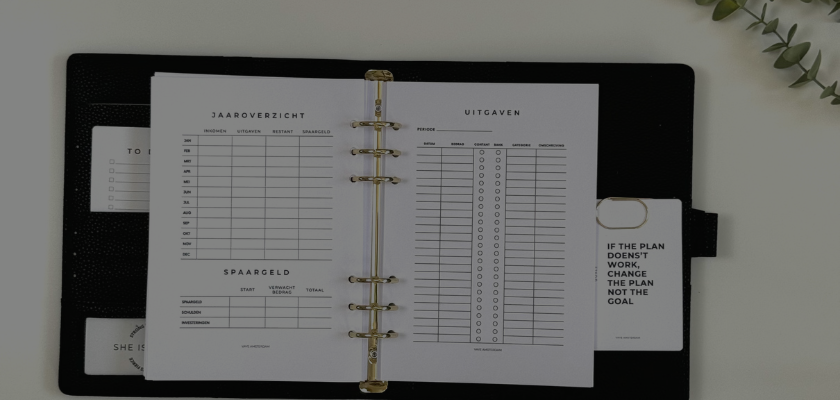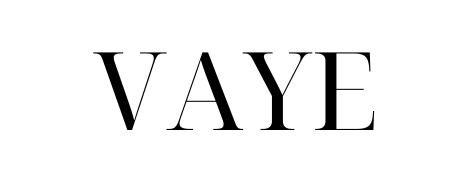
10 tips to get more out of your budget planner
Share
If you've ever tried to get your finances in order, you know how challenging it can be to keep track of everything. Fortunately, there's a tool that can help you not only get a handle on your finances but also save and spend with confidence: the budget planner. But as with any tool, you'll only truly benefit from it if you know how to use it properly. In this blog post, I'll share 10 smart tips to get the most out of your budget planner. Let's get started!
1. Set realistic goals
One of the most important functions of a budget planner is to help you set goals. But let's be honest: unrealistic goals only lead to disappointment. Start with achievable goals, like building a €500 emergency fund or saving for a weekend getaway.
Use your budget planner to break down your goals into smaller, manageable steps. For example: "I want to set aside €50 each month for my vacation." Making your goal concrete makes it less overwhelming and helps you know exactly what to do.
2. Keep track of all your income and expenses
Your budget planner only works if you're completely honest about your financial situation. This means not only recording your regular income and expenses, but also the little things that are often overlooked. Think of that coffee to go or that impulsive online purchase.
Make it a habit to update everything daily or weekly. By writing everything down, you'll get a complete picture of where your money is going. And believe me, it can be quite confronting, but it's worth it!
3. Regularly update your budget
A budget planner isn't a one-time exercise. To truly benefit from it, you need to update it regularly. For example, schedule a fixed time each week—Sunday afternoon with a cup of tea, for example—to review your past week's expenses and check your goals.
This not only helps you stay on track, but it also gives you the opportunity to adjust if things don't go as planned. Did you spend more on groceries this week? Then you can compensate by slightly adjusting your "outings" budget.
4. Create specific budget categories
One of the biggest advantages of a budget planner is that you can organize your finances into manageable categories. Think of things like:
- Groceries
- Transport
- Subscriptions
- Savings goals
- Spare time
By organizing your expenses into specific categories, you'll have more control over where your money goes. You'll also be able to more quickly see where you can potentially save.
5. Make your budget planner personal and motivating
Your budget planner is a tool, but it can also reflect your personal style and goals. Add a touch of your own personality! Think inspiring quotes, a list of your top three savings goals, or even a photo of something you're working toward, like a new car or vacation.
By personalizing and motivating your planner, it becomes not just a place to track numbers, but also a source of inspiration. Every time you look at it, you'll remind yourself why you're doing this.
6. Plan monthly and annually
The beauty of a budget planner is that you can plan for both the short and long term. Use the monthly sections to track your spending and savings goals for that month. But don't forget to create an annual overview as well.
Consider things like:
- Tax payments
- Holidays
- Major purchases such as a new laptop or refrigerator
- Holidays and birthdays
By noting these moments in your planner in advance, you avoid surprises and can prepare better.
7. Set automatic reminders in your planner
Are you also someone who sometimes forgets to pay a bill? Don't worry, it happens to the best of us. Use your budget planner to set reminders for important payment dates. For example, note down when your rent or mortgage is due, or when your annual car insurance payment is due.
By clearly marking these dates in your planner, you'll have an overview of upcoming payments. This not only helps you pay on time but also ensures you have sufficient funds in your account.
8. Use overviews
One of the best ways to gain insight into your finances is by using visual aids. Many budget planners offer space to fill in charts or overviews. Think of a progress chart for your savings goals or a monthly comparison of your expenses.
By visualizing numbers, you can more quickly recognize trends and patterns. For example, you can see at a glance that your grocery budget is always higher in the winter, or that you spend more on outings in the summer.
9. Evaluate your budget regularly
A budget isn't a static document. Your life changes, and so does your financial situation. Make it a habit to regularly evaluate your budget. What worked well? What went wrong? And how can you do things differently next time?
For example, schedule a monthly review. Take 15 minutes to review your spending, savings goals, and progress. This will not only help you identify areas for improvement but also motivate you to keep going.
10. Use your planner for savings goals
A budget planner isn't just for tracking your expenses. It's also a great tool for saving. Use a separate section in your planner for your savings goals. Note how much you've already saved and how much you still need.
Make it extra motivating by creating milestones. For example: "When I reach €200, I will treat myself to something small, like a book or a coffee." Rewarding your progress this way makes saving more fun and keeps you motivated.
Conclusion
A budget planner can have a huge impact on your finances, but only if you use it effectively. By applying the tips in this blog post, you'll get more out of your planner and achieve your financial goals faster. Whether you want to save for a vacation, experience less stress about bills, or simply gain more control over your spending, a budget planner can help.
Ready to get started? Check out our budget planners and take the first step toward a better financial future today!
